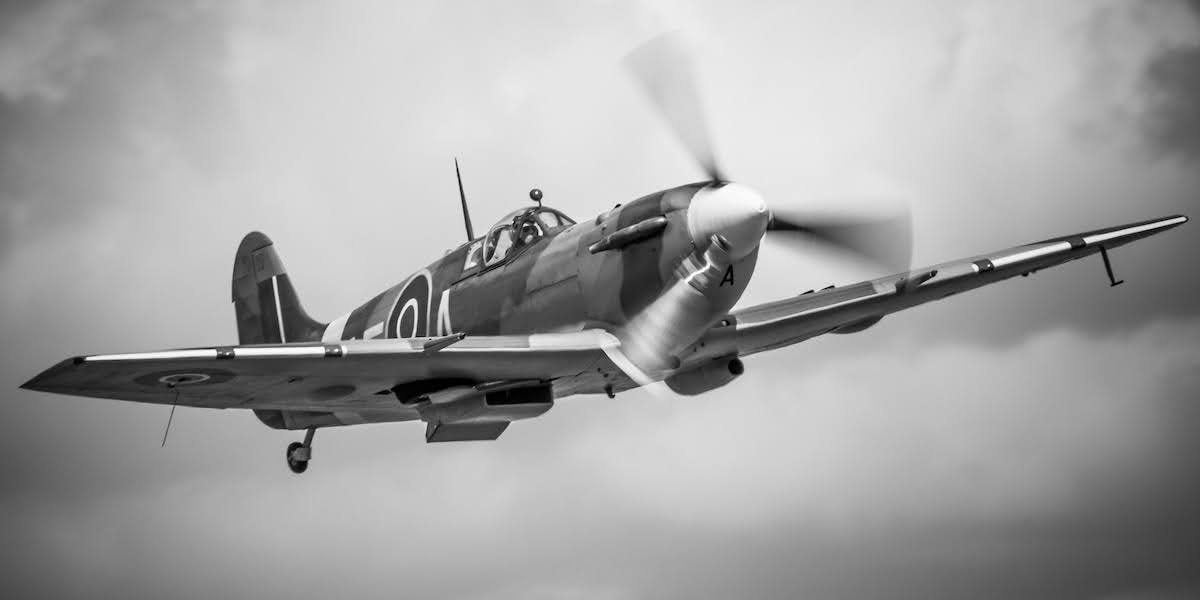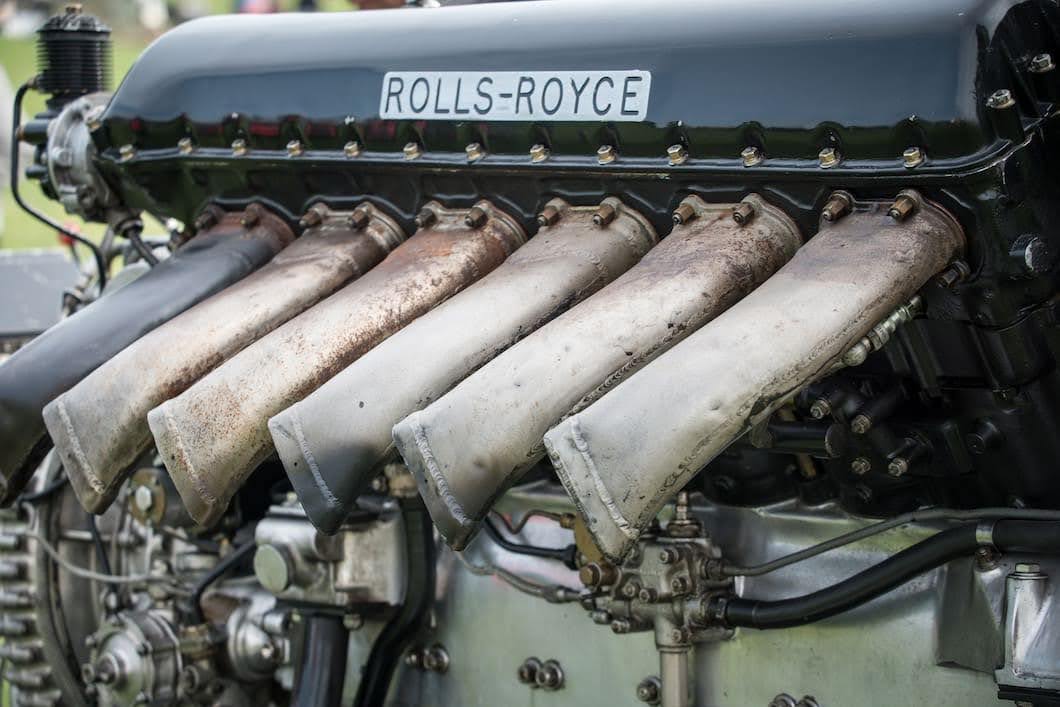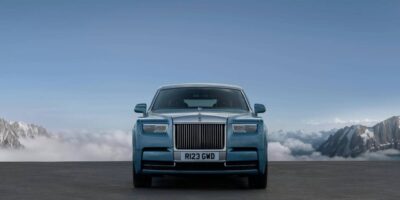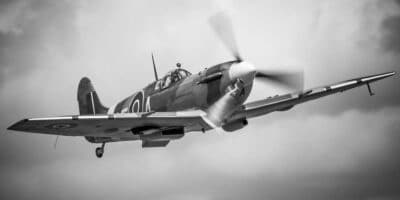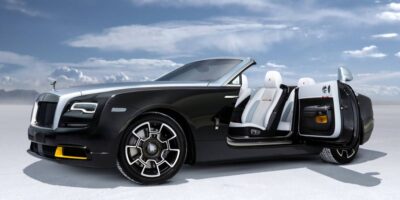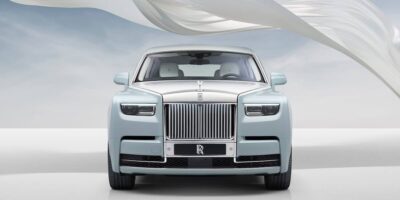When you think of Rolls-Royce, luxury cars probably come to mind first. But did you know that this famous brand once built one of the most important aircraft engines in history? The rolls-royce merlin engine didn’t just power planes—it helped win World War II and changed aviation forever.
This incredible engine shows the same attention to detail and commitment to excellence that you’ll find in every Rolls-Royce car today. Understanding this amazing piece of history helps explain why Rolls-Royce vehicles are still considered the best luxury cars in the world.
The Birth of a Legend
Back in the early 1930s, Rolls-Royce engineers knew they needed to build something special. Aircraft were getting faster and flying higher, which meant they needed more powerful engines. That’s when the team started working on what would become the rolls-royce merlin. They named it after the famous wizard Merlin, and it really was magical in what it could do.
But why did Rolls-Royce decide to build aircraft engines in the first place? The company had already made a name for itself building luxury cars, but they saw an opportunity in aviation. The world was changing rapidly, and they knew that mastering flight technology would make them leaders in all kinds of engineering.
The Aviation Challenge of the 1930s
During this time, aircraft manufacturers were hitting walls they couldn’t break through. Existing engines were:
- Too heavy for the power they produced
- Unreliable at high altitudes
- Unable to handle the stress of combat flying
- Limited in how much power they could deliver
Military leaders around the world were asking for fighter planes that could fly higher, faster, and longer than ever before. The problem was that no engine existed that could meet these demands. Rolls-Royce saw this as the perfect challenge for their engineering team.
The company had already built a reputation for creating engines that were both powerful and reliable. Their car engines were known for running smoothly and lasting for decades. Now they wanted to bring that same level of excellence to aviation.
Why Name It After a Wizard?
You might wonder why they chose the name “Merlin” for their engine. Rolls-Royce had a tradition of naming their engines after birds of prey, like the Kestrel and the Peregrine. But for this special project, they decided to go with something more mythical.
Merlin, the legendary wizard from Arthurian tales, represented:
- Magical power and wisdom
- The ability to accomplish the impossible
- A guide who could lead heroes to victory
- Mystical knowledge that others couldn’t understand
The engineers felt this name captured what they were trying to create – an engine that would seem almost magical in its capabilities.
Setting Ambitious Goals
The engineers had big dreams for this engine. They wanted to create a 27-liter V12 engine that could produce over 1,000 horsepower. To put that in perspective, that was incredibly powerful for the 1930s. They also needed it to work perfectly at high altitudes, where the air is thin and engines usually struggle.
But just how impressive were these goals? Let’s break it down:
Power Comparison:
- Most 1930s aircraft engines: 500-700 horsepower
- Merlin target: Over 1,000 horsepower
- Modern car engines: Usually 200-400 horsepower
- High-performance sports cars today: 500-700 horsepower
The Merlin was aiming to be more powerful than most sports cars you can buy today, and this was back in the 1930s!
Understanding Engine Size and Power
When we say “27-liter V12,” what does that actually mean? Here’s a simple explanation:
- 27-liter: This refers to the total volume of all the cylinders combined
- V12: The engine has 12 cylinders arranged in a “V” shape
- Displacement: The bigger the engine, the more fuel and air it can burn, creating more power
To help you picture this, a typical car engine today is usually between 2-4 liters. The Merlin was nearly seven times larger than a big car engine today.
The High-Altitude Challenge
Why was high-altitude performance so important? Fighter planes needed to climb high for several reasons:
- To gain tactical advantage over enemy aircraft
- To avoid ground-based anti-aircraft guns
- To intercept incoming bomber formations
- To have room to dive and build up speed for attacks
The problem is that as you go higher, the air gets thinner. Thinner air means:
- Less oxygen for the engine to burn fuel
- Reduced engine power output
- Difficulty maintaining consistent performance
- Risk of engine failure under stress
Most engines of the time would lose significant power as they climbed higher. The Rolls-Royce team knew they needed to solve this problem if their engine was going to be truly revolutionary.
Learning from Luxury Car Excellence
This same drive for perfection shows up in every Rolls-Royce car made today. Whether you’re driving through the city or on the highway, these vehicles perform flawlessly because the company never settles for “good enough.”
The lessons learned from the Merlin project influenced how Rolls-Royce approaches luxury car manufacturing:
- Attention to detail: Every component must be perfect
- Performance under pressure: The engine must work flawlessly in any condition
- Reliability: Customers depend on their vehicles completely
- Innovation: Always pushing the boundaries of what’s possible
Questions Readers Often Ask
Q: How long did it take to develop the Merlin engine? A: The initial development took about four years, from 1933 to 1937. However, improvements and new versions continued throughout the war years.
Q: How much did these engines cost to build? A: In today’s money, each Merlin engine cost roughly $100,000 to manufacture. This was considered expensive, but the performance justified the cost.
Q: Could other companies have built similar engines? A: Technically yes, but Rolls-Royce had unique advantages in precision manufacturing and metallurgy that made their approach especially successful.
Q: Did Rolls-Royce stop making car engines to focus on aircraft? A: No, they continued making luxury car engines throughout the war, though aircraft engines became their primary focus during wartime.
The foundation laid during the Merlin’s development created engineering principles that continue to guide Rolls-Royce today. Every luxury vehicle they build reflects the same commitment to excellence that made the Merlin engine legendary.
Building to Perfection
The team spent years developing new ways to build engines. Every single part had to be perfect, measured down to tiny fractions of an inch. This level of precision was almost unheard of back then, but it became the standard that Rolls-Royce still follows today when building their luxury vehicles.
Revolutionary Engineering That Changed Everything
The rolls-royce merlin engine was packed with new ideas that had never been tried before. It used liquid cooling instead of air cooling, which kept the engine at the perfect temperature. It also had a supercharger that helped it breathe properly at high altitudes where fighter planes needed to fly.
Smart Design Choices
One of the coolest things about the Merlin was how it was built in pieces. Each part could be made separately and then put together with incredible precision. This meant that every single engine could be checked and tested at each step of the building process.
This same approach is used today when Rolls-Royce builds their cars. Each vehicle is carefully assembled by hand, with experts checking every detail to make sure everything is perfect.
Cutting-Edge Materials
The engine used some of the most advanced materials available at the time. The cylinder heads had special designs that squeezed every bit of power out of the fuel. The connecting rods and crankshaft were made from super-strong steel that could handle the incredible forces inside the engine.
These innovations in materials and design became the foundation for all the advanced technology you’ll find in modern Rolls-Royce vehicles.
Testing Everything Twice
Before any Merlin engine was installed in an aircraft, it had to pass incredibly tough tests. Engineers measured everything and documented every detail. This commitment to quality control is the same approach Rolls-Royce uses today when building cars that need to be absolutely perfect.
The Spitfire Partnership That Made History
When most people think of World War II aircraft, the Spitfire probably comes to mind. What many don’t realize is that the rolls-royce merlin was the heart of this legendary fighter plane. Together, they created one of the most effective combat aircraft ever built.
The partnership between the Spitfire and the Merlin engine wasn’t planned from the beginning. In fact, the Spitfire was originally designed to use a different engine entirely. But when designers Reginald Mitchell and his team at Supermarine saw what the Merlin could do, they knew they had found something special.
How the Perfect Match Came Together
The story of how the Spitfire and Merlin found each other is fascinating. Supermarine was working on a new fighter design, but they were struggling with engine choices. The available engines were either:
- Too heavy for the sleek airframe they wanted
- Not powerful enough for the performance goals
- Unreliable under the stress of combat flying
- Unable to maintain power at different altitudes
When Supermarine engineers first tested the Merlin, they couldn’t believe the results. The engine was lighter than expected, more powerful than promised, and incredibly smooth in operation. It was like finding the perfect dance partner – everything just clicked.
The Magic of Aerodynamic Design
The Spitfire’s famous curved wings weren’t just beautiful – they were scientifically designed for maximum efficiency. When combined with the Merlin’s power, these wings allowed the plane to:
- Turn tighter than most enemy fighters
- Climb faster to gain altitude advantage
- Maintain speed in steep dives
- Recover quickly from high-stress maneuvers
The Merlin’s consistent power delivery was crucial for these capabilities. Other engines might surge or hesitate during rapid throttle changes, but the Merlin responded instantly to pilot commands.
Combat Performance That Changed Everything
In actual combat, the Spitfire-Merlin combination proved devastating. Here’s what made it so effective:
Speed and Acceleration:
- Top speed: Over 360 mph (incredibly fast for the time)
- Climb rate: Could reach 20,000 feet in under 8 minutes
- Acceleration: Instant throttle response for emergency maneuvers
- Dive performance: Could outdive most enemy aircraft
Maneuverability Advantages:
- Tight turning radius for dogfights
- Quick roll rate for evasive action
- Excellent control at high speeds
- Stable gun platform for accurate shooting
Reliability When It Mattered Most
Fighter pilots needed engines they could count on completely. During intense dogfights, there was no room for mechanical problems. The Merlin engine gave pilots the confidence they needed because it delivered power instantly and kept running no matter what.
But what exactly made the Merlin so reliable? Several factors worked together:
Built-in Redundancy:
- Multiple ignition systems in case one failed
- Robust cooling system that could handle battle damage
- Strong internal components that resisted wear
- Simple controls that pilots could operate under stress
Battle-Tested Durability: The Merlin proved it could handle incredible abuse:
- Direct hits from enemy bullets
- Extreme temperature changes during rapid altitude shifts
- Prolonged operation at maximum power settings
- Rough landings on damaged airfields
Pilots often returned from missions with bullet holes in their engines, yet the Merlin kept running. This reliability became legendary among aircrews, who knew they could push their aircraft to the limit without worrying about mechanical failure.
Real Stories from Real Pilots
Many Spitfire pilots shared stories about their Merlin engines saving their lives:
Emergency Situations the Merlin Handled:
- Engines that kept running despite losing oil pressure
- Power plants that operated normally after taking direct hits
- Motors that provided full power even with damaged cooling systems
- Engines that started reliably in freezing conditions
One famous pilot, Douglas Bader, once said the Merlin was like having a reliable friend in the cockpit. You knew it would be there when you needed it most.
The Battle of Britain Success
During the crucial Battle of Britain in 1940, the Spitfire-Merlin combination proved its worth. The statistics tell the story:
- Spitfires shot down more enemy aircraft than any other British fighter
- Merlin engine failure rate was less than 1% during combat missions
- Pilots consistently praised the engine’s reliability and performance
- The combination helped turn the tide of the entire war
This same reliability is what Rolls-Royce car owners experience today. When you drive a Rolls-Royce, you know it will perform perfectly every single time.
Technology That Translated to Luxury Cars
The lessons learned from Merlin reliability directly influenced how Rolls-Royce builds cars today:
Engineering Principles Applied to Automobiles:
- Redundant systems for critical functions
- Extensive testing under extreme conditions
- Premium materials that resist wear and failure
- Simple, intuitive controls for the driver
Quality Standards:
- Every component tested before installation
- Multiple inspections throughout assembly
- Performance verification before delivery
- Ongoing support throughout ownership
Proving Excellence Under Pressure
The success of the Merlin in the Spitfire showed what could happen when engineering excellence met real-world demands. This lesson continues to guide how Rolls-Royce approaches car design today, where luxury and performance must work together seamlessly.
The wartime testing environment was far more demanding than any car will ever face, yet the Merlin excelled. This gave Rolls-Royce confidence in their engineering approach and manufacturing methods.
Questions Readers Often Ask
Q: How many Spitfires were powered by Merlin engines? A: Over 20,000 Spitfires were built, and most used various versions of the Merlin engine throughout the war.
Q: Did other British fighters use the Merlin engine too? A: Yes! The Hurricane fighter also used Merlin engines and actually shot down more enemy planes than the Spitfire during the Battle of Britain.
Q: How often did Merlin engines need maintenance? A: In combat conditions, engines were inspected after every 25 flight hours and completely overhauled every 100 hours.
Q: Could pilots tell the difference between different engines? A: Absolutely. Pilots consistently reported that Merlin-powered aircraft felt more responsive and reliable than those with other engines.
Q: What happened to damaged Merlin engines? A: They were often rebuilt and returned to service. The modular design made repairs relatively straightforward even under wartime conditions.
Q: How does this relate to modern Rolls-Royce cars? A: The same engineering principles – reliability, performance, and attention to detail – guide every aspect of luxury car development today.
The partnership between the Spitfire and the rolls-royce merlin created a legacy that extends far beyond aviation. It demonstrated that when exceptional engineering meets demanding requirements, the results can change history. This philosophy continues to drive Rolls-Royce’s approach to creating the world’s finest luxury automobiles.
Powering More Than Just Spitfires
While the Spitfire gets most of the attention, the rolls-royce merlin actually powered many different types of aircraft during the war. Each one proved just how versatile and reliable this engine really was.
Transforming American Fighters
The North American P-51 Mustang became one of the war’s best fighters when it was equipped with a Merlin engine. Before the Merlin, the Mustang was just okay. With the Merlin, it became a game-changer that could escort bombers all the way to their targets and back.
Supporting Heavy Bombers
The famous Lancaster bomber used four Merlin engines to carry massive bomb loads across Europe. These missions could last many hours, and the engines had to run perfectly the entire time. The de Havilland Mosquito, also powered by Merlin engines, became one of the fastest aircraft of the war.
Flexible Excellence
The fact that one engine design could work so well in so many different aircraft shows the fundamental excellence built into the Merlin. This same flexibility allows Rolls-Royce today to create vehicles that can be customized for individual clients while maintaining the same high standards of quality and performance.
Mass Production Without Cutting Corners
Building thousands of Merlin engines every month was an incredible challenge. Rolls-Royce had to figure out how to make engines quickly while keeping their famous quality standards. This was something that had never been done before on such a scale.
Revolutionary Manufacturing
The company developed completely new ways to build engines. They created precision tools and new inspection methods that made sure every engine was perfect. These innovations changed how manufacturing worked and still influence how Rolls-Royce builds cars today.
Meeting Impossible Deadlines
The war created urgent demand for engines, but Rolls-Royce refused to compromise on quality. They found ways to work faster without cutting corners. This ability to deliver excellence under pressure is still a key part of how the company operates today, especially when creating custom vehicles for demanding clients.
Innovations That Changed the Future
The rolls-royce merlin engine introduced many new technologies that went on to influence both aircraft and car engines for decades. Some of these innovations are still being used today in modern vehicles.
Advanced Fuel and Ignition Systems
The Merlin’s fuel injection system was incredibly advanced for its time. It could deliver exactly the right amount of fuel to optimize performance and efficiency. The electronic ignition systems developed for the Merlin also influenced car technology, leading to improvements that drivers still benefit from today.
Breakthrough Materials
The engine used special steel alloys and heat-resistant parts that pushed the boundaries of what was possible with materials science. These innovations laid the groundwork for the exotic materials and advanced alloys used in today’s Rolls-Royce vehicles, where everything must be strong, durable, and perform perfectly.
A Legacy That Lives On
The engineering principles that made the rolls-royce merlin engine legendary continue to influence every car that Rolls-Royce builds today. The same commitment to precision, reliability, and performance that made the Merlin a wartime hero is what makes Rolls-Royce vehicles the ultimate in luxury transportation.
Modern Engineering Excellence
Modern Rolls-Royce cars use the same attention to detail and pursuit of perfection that characterized the Merlin engine development. Advanced manufacturing techniques, rigorous quality control, and innovative engineering solutions make sure that today’s Rolls-Royce automobiles deliver the same level of excellence that made the Merlin engine famous.
Lessons from Victory
The Merlin’s success showed that superior engineering could make the difference between victory and defeat in the most challenging situations. This lesson continues to guide Rolls-Royce’s approach to car engineering, where vehicles must perform flawlessly while providing the ultimate in luxury and comfort.
Heritage of Excellence
For people who appreciate engineering excellence and understand the value of proven heritage, the story of the rolls-royce merlin engine shows the depth of expertise and commitment to perfection that defines the Rolls-Royce brand. Whether powering aircraft through dangerous skies during wartime or delivering luxury vehicles to the world’s most discerning clients, Rolls-Royce continues to set standards that others can only hope to match.
If this legacy of engineering excellence inspires you and you’re thinking about a vehicle that represents these same principles of craftsmanship and performance, contact Braman Rolls-Royce of Palm Beach to discover how this heritage of innovation continues to create the ultimate luxury driving experience.

